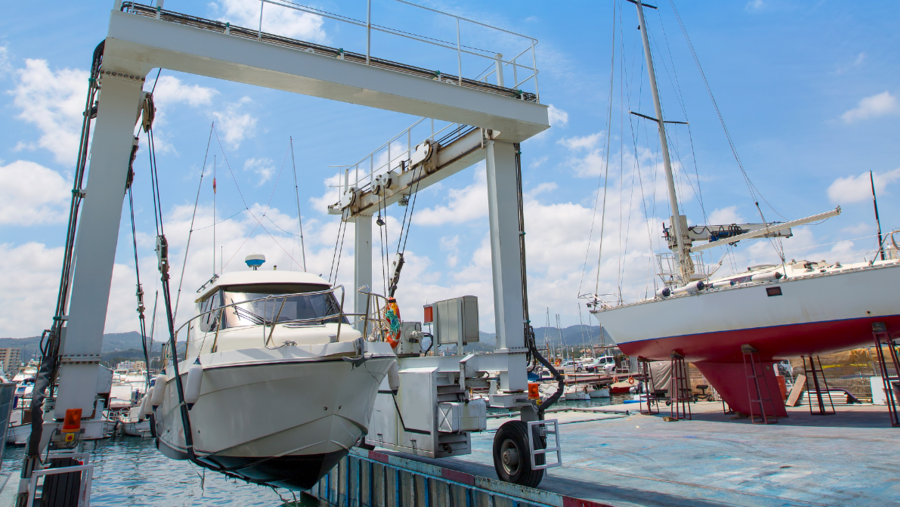The Vital Role Of Seacocks In Boat Safety And Maintenance
Seacocks are often overlooked but play a crucial role in a boat's safety, functionality and long-term seaworthiness. These valves control the intake and discharge of water from various systems on board, establishing essential operations like engine cooling, bilge pumping and waste management. However, because most operate under the demanding conditions of saltwater exposure, seacocks are susceptible to corrosion and degradation, making their maintenance essential to prevent serious issues, or even catastrophic failures.

What is a Seacock?
A seacock is a type of valve installed on the hull of a boat that allows water to flow into or out of the vessel. Primarily found on through-hull or ‘skin’ fittings, seacocks can be shut off to prevent water ingress in case of a failure, or to stop water from entering when not in use. They are typically used to regulate water intake for engine cooling systems, wastewater and bilge pump discharge.

Why seacock maintenance matters
Since seacocks are usually in constant contact with seawater, they are highly susceptible to corrosion, wear, and other environmental impacts. The damage caused by a failed seacock can be significant and, if it fails unexpectedly, it could result in severe water ingress or even sinking. This is particularly concerning because most insurance policies exclude not only wear and tear itself but also any resulting damage, leaving owners to cover substantial repair costs.. Without specific cover for such scenarios, owners could face a heavy financial burden. However, the Pantaenius Yacht Cover Plus policy offers extended protection by covering the resulting damage caused by wear and tear, with just the failed part being excluded. This type of cover ensures that owners are not left financially vulnerable.A well-maintained seacock reduces the risk of these costly incidents and extends the life of the valve and related components. Regular checks and timely replacements can make all the difference in keeping your boat safe and watertight.
How to inspect and maintain seacocks
Routine inspections are vital for catching signs of wear before they escalate. Here are some best practices for inspecting and maintaining seacocks:
Visual checks: Inspect for signs of corrosion, pitting, or greenish discoloration, which may indicate galvanic corrosion. Brass and bronze seacocks, in particular, can suffer from dezincification, which weakens the metal.
Function testing: Regularly open and close each seacock to ensure they operate smoothly. A seacock that is difficult to move may need lubrication or replacement.
Look for leaks: Check for signs of water seepage around the seacock or through-hull fitting. Even a small leak could indicate a compromised seal.
Material choice matters: Opting for high-quality materials like marine-grade bronze or, in some cases, composite fittings, can extend the life of a seacock. Avoiding low-grade brass, which is prone to dezincification, is particularly important in saltwater environments.
Replacement and choosing the right seacock
The lifespan of a seacock varies based on the material, environment, and usage, but it is generally recommended to consider replacement every five to ten years, depending on inspection results. If a seacock shows any signs of corrosion, stiffness, or leakage, it’s best to replace it promptly.
For both replacements and new installations, choosing a high-quality seacock is essential. Look for fittings made from certified marine-grade materials, as these are more resilient against corrosion and mechanical stress. Ensure that all connections are compatible with your boat’s plumbing to avoid issues with fit or functionality.
The insurance angle
Boat owners should be aware that most standard insurance policies exclude damage resulting from wear and tear. This is why regular maintenance is crucial , as otherwise policyholders may find themselves facing significant costs should a part fail due to ordinary deterioration rather than an accident. However, there are insurance policies that offer additional protection against damage resulting from wear-related failures. Policies that include this cover, such as the Pantaenius Yacht Cover Plus policy stand apart by providing cover for loss or damage resulting from wear and tear, corrosion and electrolysis - protecting you beyond the failed part.
Seacocks may be small fittings, but they have a substantial impact on the safety and security of your vessel. By dedicating time to regular inspections, maintenance, and timely replacements, boat owners can protect against water ingress, costly repairs, and unexpected claims denials. Prioritising seacock care will not only extend the life of these essential components but also contribute to the overall reliability and safety of your vessel, giving you peace of mind on the water.
